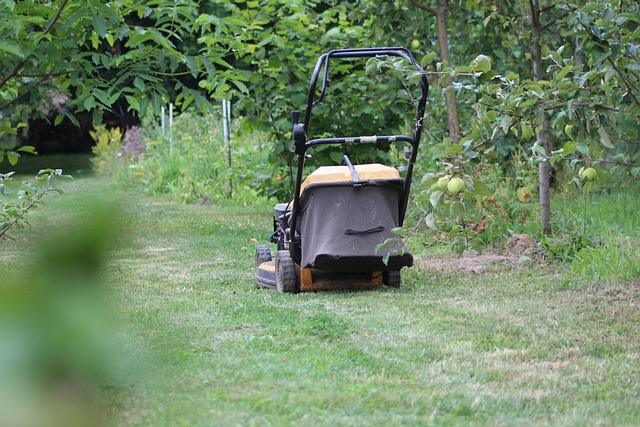We may earn money or products from the companies mentioned in this post.

Mowing your lawn should be simple, but it’s actually a lot more complicated than you might think. You don’t need a Ph.D. to do a good job, but you do need to know what you’re doing to make it a success. Mowing won’t always turn out how you want otherwise.
In this beginner’s guide, we discuss how to choose the right mower, set the height of the blade, and avoid common mowing mistakes. By the end of it, you should feel confident about mowing your lawn and making a good job of it.
So what do you need to know? Let’s take a look.
Choosing The Right Mower
The first step to mowing your lawn is choosing the right mower for your needs. There are different types of mowers, such as gas-powered, electric, cordless, reel, and robotic. Each type offers something unique.
Factors you will need to consider include:-
The size of your lawn. The larger your lawn, the bigger and more capable will be the lawnmower you’ll need. Gas-powered mowers are usually more powerful than electric ones, but they also require more maintenance and produce more emissions. Electric mowers are quieter and more eco-friendly, but they may not have enough battery life or cord length for large lawns. You’ll need to consider how these factors apply to your setup
Features. Your lawnmower’s features can affect its performance and whether it provides the cutting action you need. Look for things like adjustable speed, bagging options, and mulching capabilities. The more features a lawnmower has, the more of your lawn you can mow in a single pass.
Budget. Lastly, consider how much money you need to spend. The price of your mower can vary depending on the type, brand, model, and features. Gas mowers tend to be cheaper, in general, than electric ones, but the latter can be more flexible and don’t require you to constantly refill them with fuel.
When choosing a petroleum-powered mower, be sure to educate yourself. Read this guide on how to clean the carburetor and always refuel safely. Don’t take risks when mowing your lawn. Lawnmowers can be dangerous.
Setting The Height
Setting the height is the second important step when it comes to mowing your lawn effectively. You want to avoid getting the height wrong, setting it too high, or too low, which could damage your grass or lawn.
If you set the height too short, you could expose your grass to more weeds, pests, diseases, drought stress, and heat damage. If you cut it too long, you may create a dense thatch layer that can prevent water and air from reaching the soil. Grass that grows out of control rarely produces good results. When selecting blade height, consider the following:-
The type of grass. Different types of grass have different optimal heights for mowing. Cool-season grasses prefer heights anywhere from 2.5 to 5 inches. Warm-season grasses can adapt to heights of 1 to 3 inches
The season. In the spring and autumn, the weather is mild and moist in most temperate regions, so you can cut grass to its optimal height or slightly lower. However, when the weather is hot and dry or cold and snowy, you should cut grass at its optimal height or slightly higher to protect it from heat stress or frost damage.
Lawn condition. Lastly, be sure to consider the lawn’s condition. That too can influence how high or low you should cut it. Healthy and well-maintained lawns can be cut to their optimal heights, but unhealthy lawns may require a higher cut to help them recover and improve.
Avoiding Common Mistakes
The third step is to avoid common mistakes when mowing your lawn. You want to ensure you avoid “scalping” it or allowing other non-grass species to grow.
Here are some of the most common mistakes people make:-
Mowing the lawn too frequently. Cutting grass all the time causes too much stress to the plants, causing some of them to die back, or die off entirely.
Mowing the lawn infrequently. Similarly, mowing too infrequently can cause your grass to grow too long and create a thick thatch layer.
Mowing with dull blades. Lawnmowers need to be sharp and cut through grass crisply. Dull blades damage grass and may cause it to die off. They can also rip shoots and roots from the soil, making the grass look patchy and ragged.
Mowing in the same direction. This technique can cause the grass to grow unevenly over time, leaning to one side or the other.